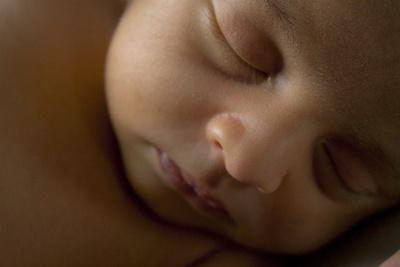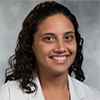
Sleep is something that is very important for the entire family and having your baby sleep in a safe environment lets the whole family get that much-needed rest. The American Academy of Pediatrics (AAP) has recommendations for infants aged 0-1 year in regards to safe sleep, and this is what you need to know about it.
Infants should have their own sleep environment
Infants should have their own sleep environment that is separate from the rest of the family. This should be in a location such as a crib or bassinet. It is unsafe for infants to co-sleep (also known as bed sharing) with family members. The AAP recommends room-sharing until the infant is at least 6 months old. If you decide to move your infant to another room, talk about it with your pediatrician about it first.
Infants should sleep on their back
The safest position for infants to sleep is on their back. Sleeping on their back will decrease the risk of SIDS (Sudden Infant Death Syndrome) which is one of the leading causes of infant death. Babies placed on their back are actually less likely to choke on any vomit or spit-up because their bodies are designed to protect their airway. Infants can move on their own but should be placed on their back. Back is always best!
Infants should sleep flat
The safest place for infants to sleep is on a flat, firm surface such as a crib or a bassinet with only a tight-fitted sheet. Infants will commonly fall asleep in swings and bouncers which are on an incline. This is not safe for infants to sleep in this position as their chins can drop which can block off their airway. It is best for them to sleep in their designated sleep areas. Lots of people ask about elevating the cribs and bassinets if the infant has reflux or is a “spitty” baby, but this is not recommended by the AAP and can be unsafe. Infants can be held upright after a feed to help with this but should not sleep in this position. You should not raise the head of your baby’s sleeping environment unless you were told to by your pediatrician.
Sleep environments should be empty
Until infants are older than 1 year of age, their sleep environments should be empty--which includes no stuffed animals, bumpers, extra blankets or toys. These are dangerous for a baby and can increase the risk of suffocation.
Infants should not have any loose blankets to sleep.
The best things for your baby to sleep in are: their clothing or diaper, a wearable blanket, or one tight-fitting swaddle. Loose or fluffy blankets increase the risk of SIDS and suffocation. Infants should also not be overdressed for sleep as when a baby is too warm, this can increase the risk of SIDS. Keep the temperature of the room comfortable for an adult, and keep an eye out for signs that your infant may be too cold or too warm and adjust accordingly.
Sleep is extremely important for your infant and with these recommendations, you and your baby will be sleeping safe and sound.

Kristina Nazareth-Pidgeon, MD is an academic pediatric hospitalist and the co-chair of the Safe Sleep Taskforce at Duke University Medical Center in Durham, NC.
This article was written in conjunction with the Safe Sleep Taskforce. Committee members include: Sophie Shaikh, MD, Lauren Chamberlain MD, Courtney Collins RN and Meghann McCoy RN.